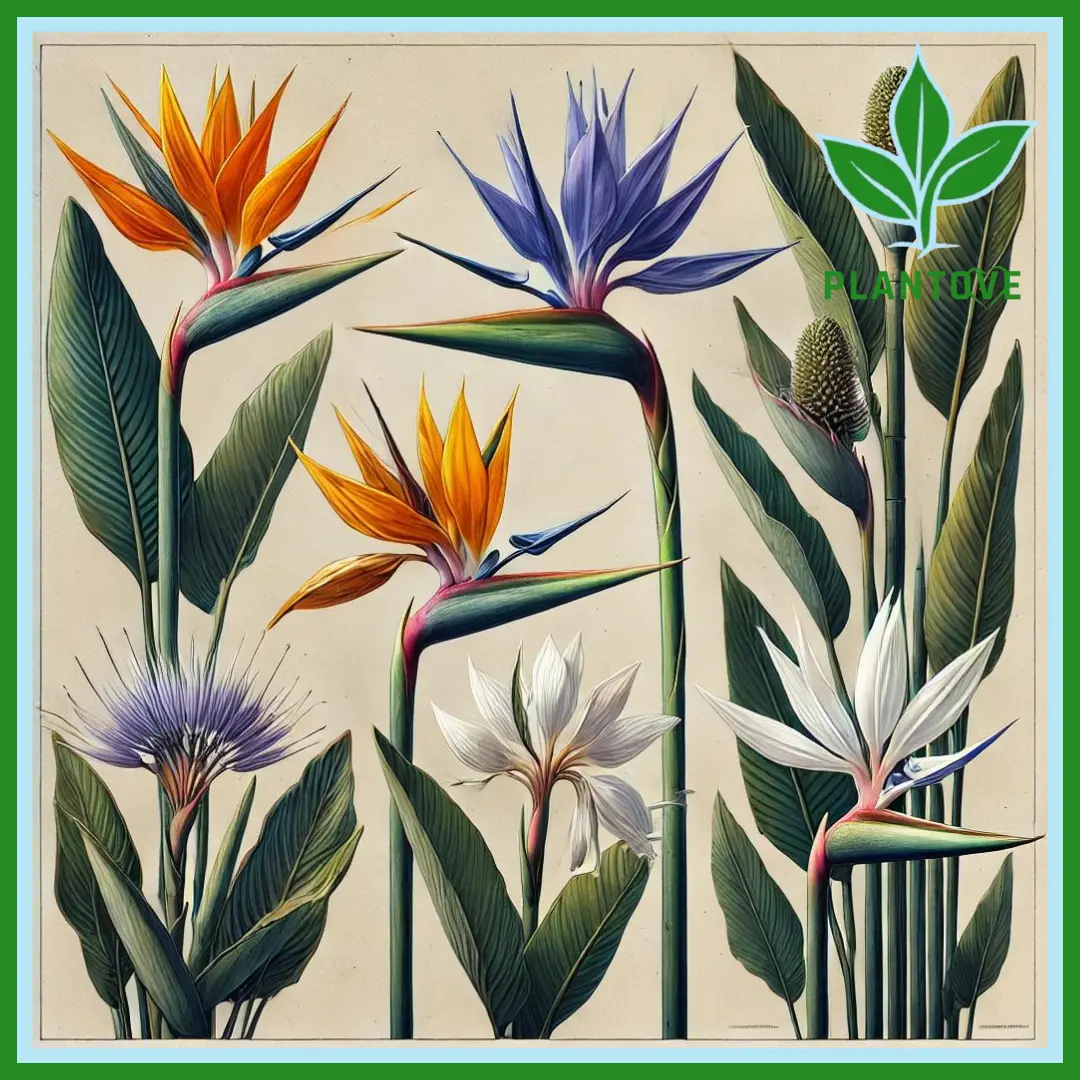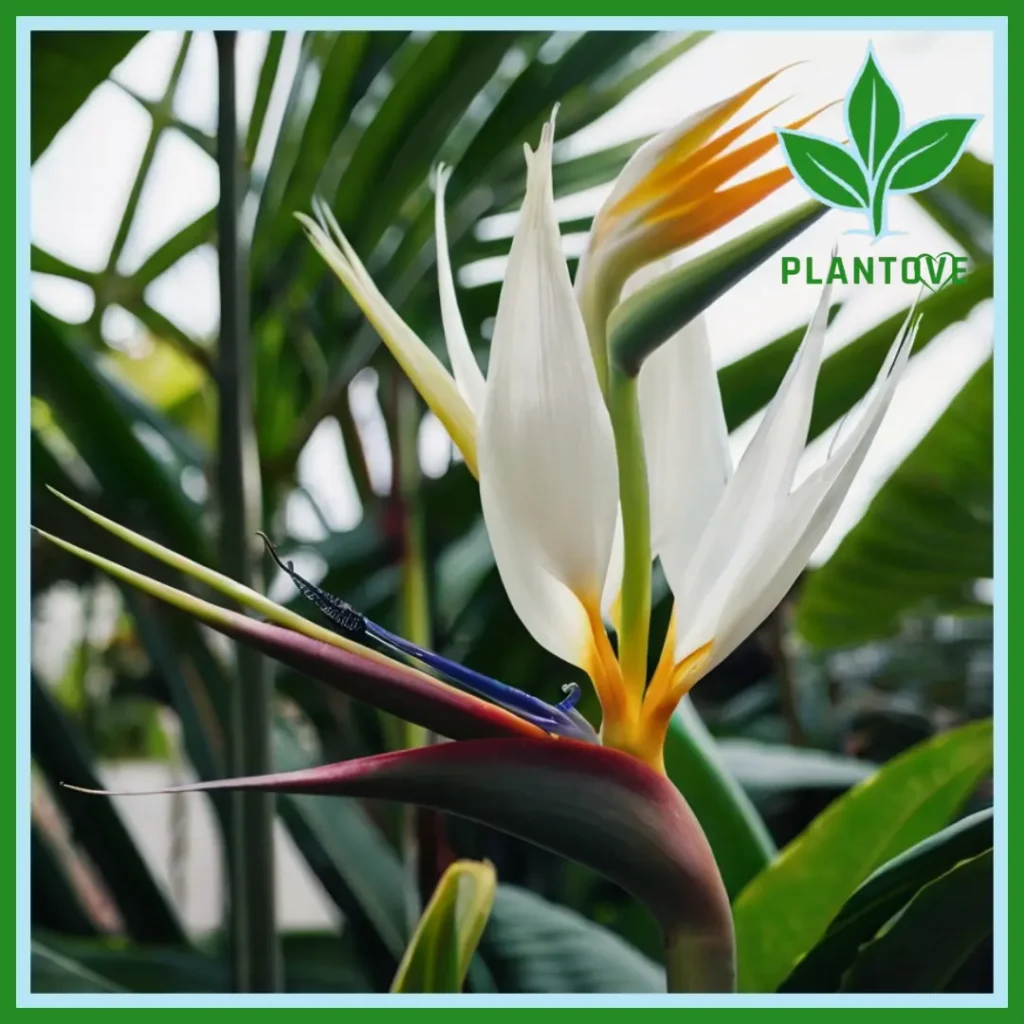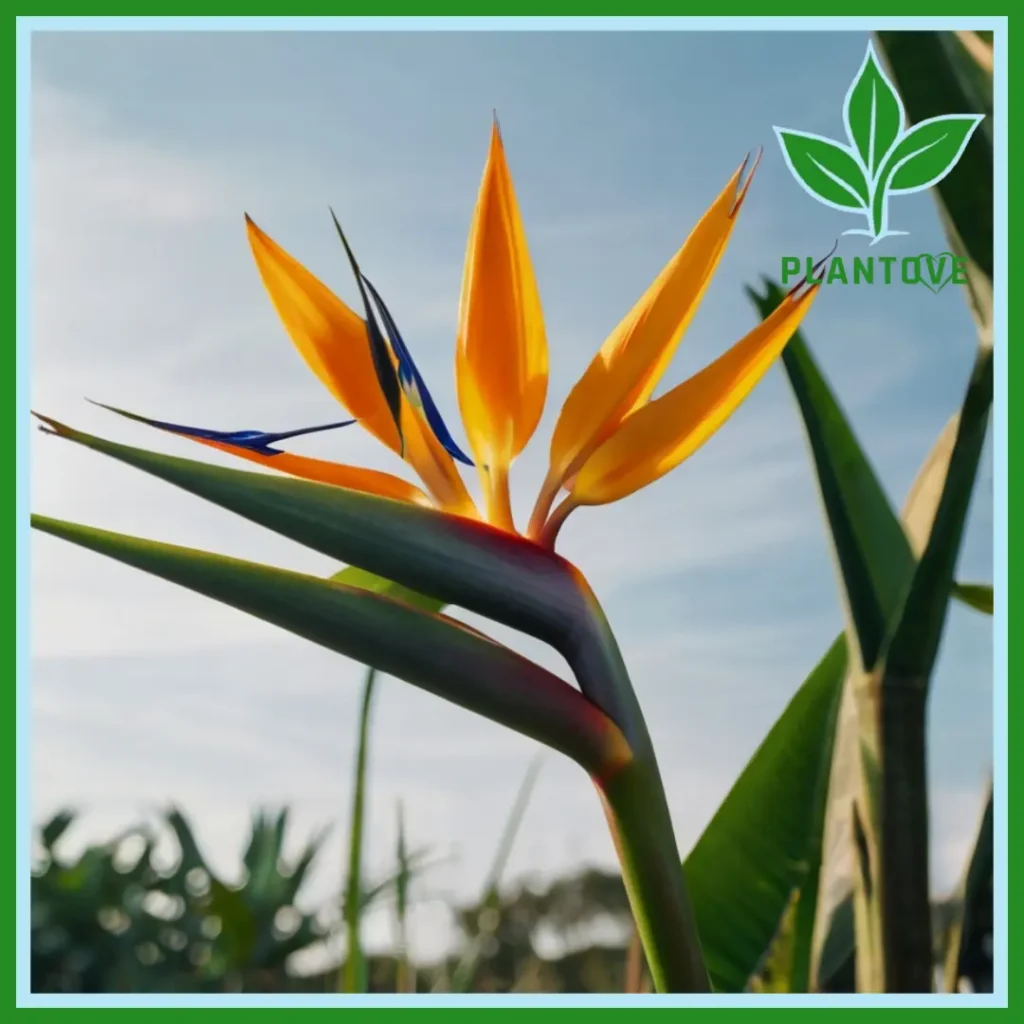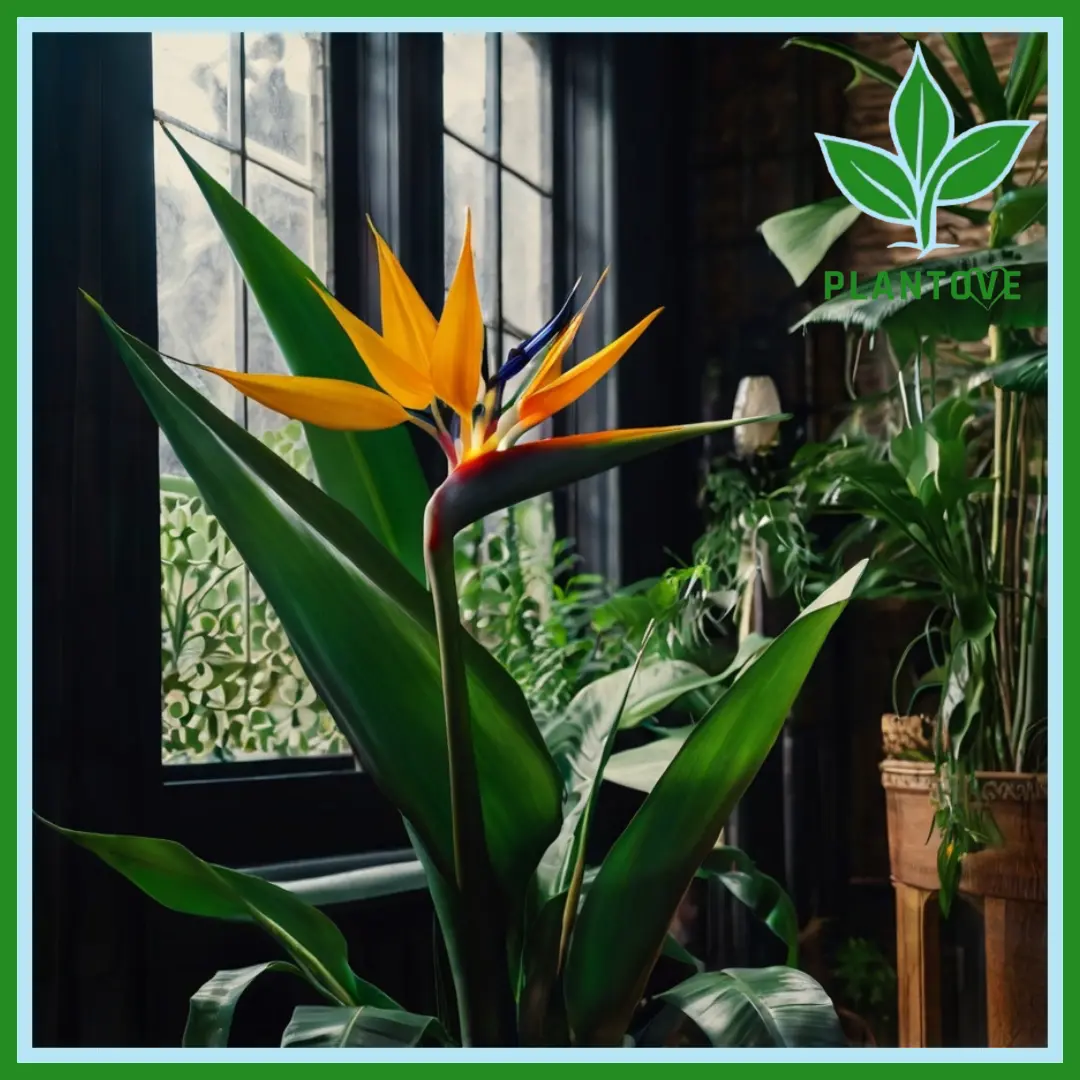The Bird of Paradise plant (Strelitzia reginae) is a striking, tropical plant known for its vibrant flowers resembling a bird in flight. It’s a popular choice among plant enthusiasts for both indoor and outdoor gardens. Whether you’re looking to add a tropical touch to your home or enhance your outdoor landscape, this care guide will help you grow a healthy and beautiful Bird of Paradise plant.
What is the Bird of Paradise Plant?
The Bird of Paradise (Strelitzia reginae) originates from South Africa and is well-known for its stunning, bird-like blooms. The plant’s bright orange and blue flowers emerge from thick green stems, making it a focal point in any garden. Its long, banana-like leaves give it a tropical feel, and with proper care, it can grow several feet tall, even indoors.
Due to its exotic look, the Bird of Paradise is a favorite among plant lovers and home gardeners alike, often used to make bold, dramatic statements in both indoor and outdoor settings. It’s also relatively low-maintenance compared to other tropical plants, making it a great choice for beginners.
Types of Bird of Paradise Plant

While Strelitzia reginae is the most well-known type of Bird of Paradise plant, there are several varieties, each offering unique characteristics. Here are the main types you can grow:
1. Strelitzia reginae
This is the most common type and is often referred to as the “Orange Bird of Paradise.” It is known for its vibrant orange and blue flowers that resemble a bird in flight. It’s typically grown both indoors and outdoors and is appreciated for its long, banana-shaped leaves and dramatic appearance.
2. Strelitzia nicolai
Also known as the “White Bird of Paradise,” this variety is much larger than Strelitzia reginae. Its flowers are white and blue, and it can grow up to 20 feet tall, making it better suited for outdoor gardens in tropical climates. This plant has a palm-like appearance, making it an impressive feature in landscapes.
3. Strelitzia juncea
The Strelitzia juncea is a more unusual variety, known for its leafless, reed-like stems. It still produces the characteristic orange and blue flowers but lacks the broad leaves of the other types. This variety is perfect for minimalist or contemporary garden designs, as it has a more streamlined, modern look.
4. Strelitzia caudata
Commonly known as the “Mountain Strelitzia,” this type is native to higher elevations in South Africa. While less common in cultivation, it’s a unique variant that has pale blue and white flowers. It’s ideal for those looking to add a rare and exotic variety to their plant collection.
5. Strelitzia alba
The Strelitzia alba, also called the “Giant White Bird of Paradise,” is similar to Strelitzia nicolai but with larger flowers and even more massive leaves. This variety is often grown outdoors in warm climates, providing a lush, tropical feel to the garden.
Which Type of Bird of Paradise Plant Should You Choose?
When selecting the type of Bird of Paradise plant to grow, consider your climate and space. For indoor growing, Strelitzia reginae is a popular and manageable choice. If you have a larger outdoor space in a warm climate, Strelitzia nicolai or Strelitzia alba can provide a striking tropical centerpiece. Each variety brings something unique, allowing you to choose the one that best suits your gardening needs.
Best Conditions for Growing Bird of Paradise Indoors

Growing the Bird of Paradise plant indoors can bring a touch of the tropics into your home. Here’s how to create the ideal conditions for indoor growth.
1. Light Requirements
Bird of Paradise plants thrive in bright, indirect sunlight. A south- or west-facing window is ideal, where the plant can receive several hours of bright light without being exposed to direct, harsh sunlight, which can scorch the leaves. If you notice slow growth or a lack of flowers, try moving the plant to a brighter spot.
While it can survive in lower light conditions, this may slow down its growth and limit its ability to flower.
2. Watering
Proper watering is essential for indoor Bird of Paradise care. Water the plant when the top 1-2 inches of soil are dry. Overwatering can lead to root rot, so ensure your plant’s pot has good drainage. During the growing season (spring and summer), water more frequently, but reduce watering in the winter when the plant enters a dormant phase.
3. Humidity and Temperature
Bird of Paradise plants prefer a humid environment. Indoors, you can increase humidity by misting the plant or placing it near a humidifier. The ideal temperature range is between 65-70°F (18-21°C). Keep the plant away from cold drafts and sudden temperature drops.
How to Grow Bird of Paradise Outdoors

If you live in a tropical or subtropical climate, you can grow the Bird of Paradise outdoors. The plant flourishes in USDA Hardiness Zones 9-11, where temperatures are warm year-round. However, it can tolerate brief periods of cold temperatures, but frost protection is necessary in cooler climates.
1. Sunlight Requirements
Outdoors, Bird of Paradise prefers full sun, which promotes flowering. However, in extremely hot regions, a bit of afternoon shade can help protect the plant from sunburn.
2. Planting
Choose a well-draining spot with rich, loamy soil. Ensure the planting area is large enough, as Bird of Paradise can spread wide, especially in outdoor environments. Space the plants at least 4-6 feet apart to allow them to grow without competing for resources.
3. Frost Protection
In colder climates, it’s important to protect the plant from frost. Covering it with frost blankets or relocating it to a sheltered area during cold spells can help preserve its health.
Watering and Soil Requirements
Whether grown indoors or outdoors, proper watering and soil are essential for a thriving Bird of Paradise plant.
1. Watering
For outdoor plants, keep the soil consistently moist, especially during the hot months. Water deeply and less frequently, aiming for about once a week, depending on weather conditions. Indoor plants should be watered more regularly, as indoor air tends to dry out faster.
2. Soil
Bird of Paradise plants prefer well-draining soil rich in organic matter. For indoor plants, use a potting mix that includes peat moss, perlite, or sand to ensure proper drainage. Outdoor plants should be planted in loamy soil that drains well while retaining enough moisture for steady growth.
Common Problems and How to Fix Them
Although Bird of Paradise plants are generally easy to care for, they can run into some common issues. Here are a few problems and solutions to keep your plant healthy:
1. Yellowing Leaves
Yellow leaves can be a sign of overwatering or poor drainage. Ensure that the soil is not waterlogged and allow the top layer of soil to dry out before the next watering. It may also indicate a lack of nutrients, so consider fertilizing the plant.
2. Root Rot
Root rot occurs when the plant is overwatered or the soil doesn’t drain well. To fix this, repot the plant in fresh, well-draining soil and reduce watering frequency.
3. Slow Growth
If your Bird of Paradise isn’t growing or flowering, it may not be getting enough light. Try moving the plant to a sunnier location or providing artificial grow lights if indoors.
4. Pests
Bird of Paradise plants can occasionally attract pests such as spider mites or aphids. Inspect the leaves regularly and treat infestations with insecticidal soap or neem oil.
FAQs on Bird of Paradise Plant Care
1. How long does it take for a Bird of Paradise plant to flower?
It can take 3-5 years for a Bird of Paradise to flower, especially if grown from seed. Providing the plant with ample sunlight and proper care will encourage faster flowering.
2. Can Bird of Paradise grow indoors without flowering?
Yes, Bird of Paradise can thrive indoors without flowering, but it may take longer to bloom if the light and care conditions are not optimal. Bright, indirect sunlight and consistent watering will improve its chances of flowering.
3. How often should I fertilize my Bird of Paradise plant?
Fertilize the plant once a month during the growing season (spring and summer) with a balanced, water-soluble fertilizer. Reduce fertilization during the fall and winter months when the plant is dormant.
4. Can I grow Bird of Paradise in a small pot?
Bird of Paradise prefers to be slightly root-bound, so it can grow in a pot that’s slightly larger than its root system. However, if the plant becomes too cramped, it will need repotting to encourage healthy growth.
5. Is Bird of Paradise toxic to pets?
Yes, Bird of Paradise is toxic to pets if ingested. Keep it out of reach of cats, dogs, and other animals to prevent any health issues.
Conclusion
The Bird of Paradise plant is a stunning tropical beauty that can thrive both indoors and outdoors with the right care. By providing the correct light, water, and soil conditions, you can enjoy its vibrant foliage and bird-like flowers year after year. Whether you’re growing it as an indoor plant or adding it to your outdoor tropical garden, following these care tips will ensure your Bird of Paradise remains healthy and thriving.
Adding the Bird of Paradise to your plant collection is a rewarding experience, offering a touch of the tropics and a conversation-starting centerpiece for any space.


Thank you for sharing your info. I really appreciate your efforts and I am waiting for your next write ups thank
you once again.
You welcome